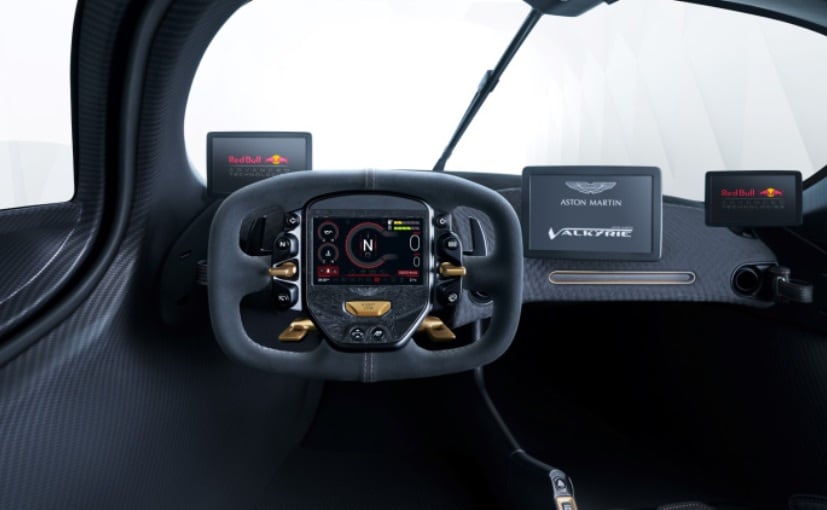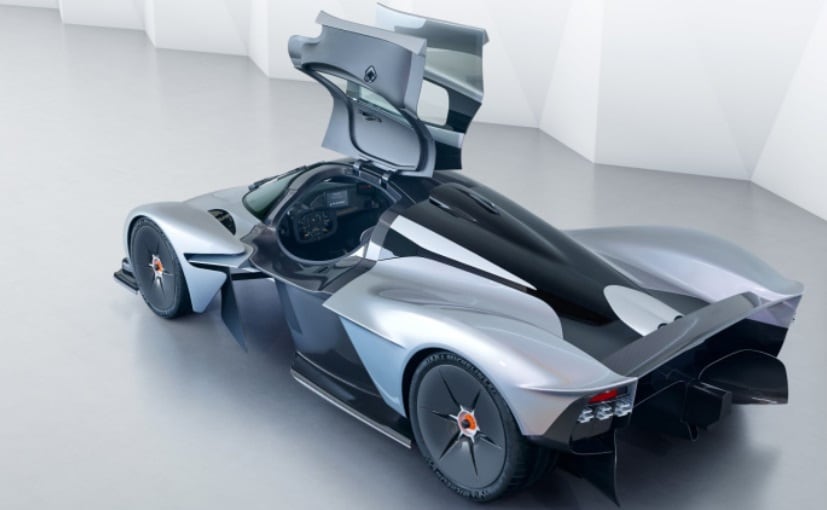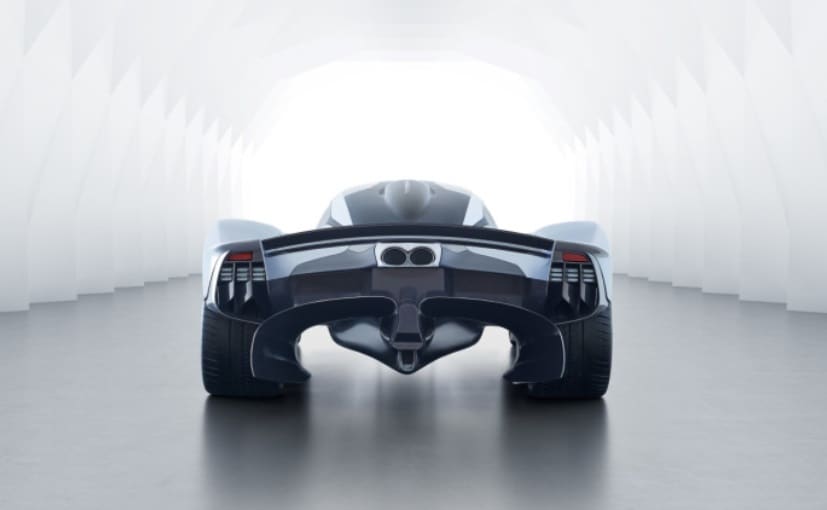Aston Martin Valkyrie Hypercar Nears Production; Details Uncovered

Highlights
- Aston Martin Valkyrie hypercar was first revealed in July 2016
- Red Bull Advanced Technologies has also worked on its aerodynamics
- Cabin space has been maximised by mounting the seats directly to the tub
We first saw Aston Martin reveal the Valkyrie hypercar in July 2016 and it's exactly a year later that we have a near production version in place. Aston Martin and Red Bull Advanced Technologies have been working intensively to further develop the Valkyrie's aerodynamics, body styling and cockpit packaging. The teardrop-shaped cockpit's upper body surfaces and lower tub contours follow the envelope of space available between the huge full length Venturi tunnels that run either side of the cockpit floor. Drawing huge quantities of air beneath the car to feed the rear diffuser, these tunnels are the key to generating the extreme downforce that's needed to keep the Valkyrie on the road.
Cabin space has been maximised by mounting the seats directly to the tub, with occupants adopting a reclined 'feet-up' position which we get to see in F1 or even cars that hit the race track for Le Mans. A four-point harness comes as standard, while an optional six-point harness will be offered for those who intend to do driving more on the track. To keep the occupants concentration in place, the designers at Aston Martin have kept distractions at a minimum. All switchgear is located on the steering wheel, with all the vital signs shown on a single OLED display screen. The steering wheel is also detachable, both to aid ingress and egress, and to serve as an additional security device.

Aston Martin Valkyrie Cabin
Matt Hill, Aston Martin Creative Director of Interiors said, "It's been a tremendous challenge to make the interior packaging work. We've embraced Red Bull Racing's Formula One ethos and approached from a different angle than conventional road car design. In this instance, we've started from a position where you think something is impossible and work at it until you find a way to make it work. We've been fighting for millimetres everywhere, but the battle has been worth it, as it's been fantastic seeing customers try the interior buck for size. They love the ritual of getting in and how it feels to be sat behind the wheel. They're also genuinely surprised at how the car just seems to swallow them. You really do have to sit in it to believe there is genuine space for two large adults."

Aston Martin Valkyrie Dashboard
Great attention has been taken with the glasshouse design to ensure forward and peripheral side-to-side vision is virtually uninterrupted. To avoid any unwanted aerodynamic disturbance or stylistic 'clutter' traditional door mirrors have been replaced by discreetly mounted rear facing cameras in each of the Valkyrie's flanks. These feed two displays which are positioned at the base of each A-post to mimic the view provided by conventional door mirrors. The all-enveloping bodywork and roof-mounted engine air intake means there is no rear window, thus no rear view mirror.

Aston Martin Valkyrie was first revealed in July 2016
While the essence of the original Aston Martin Valkyrie exterior design remains unchanged, Adrian Newey's pursuit of downforce and aerodynamic efficiency has driven many detail changes to the bodywork. Some of the most striking details though are the headlights, which take inspiration from the pure functionality of a Formula One car's components. The headlamps are 30-40 per cent lighter than the lightest series production headlamps available to Aston Martin. The same approach has been taken with the Aston Martin 'wings' badge that adorns the nose. With the regular badge considered too heavy, and a simple sticker not befitting for a car like the Valkyrie, the Aston Martin Design Team came up with a chemical etched aluminium badge just 70 microns thick, that's 30 per cent thinner than a human hair, and a 99.4 per cent lighter than the regular enamel wings badge.
Innovations continue to adorn the Valkyrie as even the centre high mounted stop light mounted on the tip of the small shark's fin is just 5.5mm wide and 9.5mm high. Illuminated by a red LED it is the world's smallest CHMSL.

Aston Martin and Red Bull Advanced Technologies have worked on the Valkyrie's Aerodynamics
Aston Martin Creative Director of Exterior Design, Miles Nurnberger, said of the Aston martin Valkyrie's design evolution: "I would say we're around 95 per cent of the way there with the exterior design. Much of what you see is actually the structure of the car, so this had to be signed-off relatively early in the project. The remaining areas of non-structural bodywork are still subject to evolution and change as Adrian [Newey] continues to explore way of finding more downforce. The new outlets in the body are a case in point. Ordinarily the last thing we'd want to do to one of our surfaces is cut a hole in it, but these vents work the front wings so much harder that they've found a significant gain in front downforce. The fact that they are so effective gives them their own functional beauty, but we've finessed them without impacting on their functionality. That they also serve as windows through which to view the fabulous wing section front wishbones is a welcome bonus!"
Last Updated on July 12, 2017
Related Articles
Latest News
- Home
- News
- Motorsport
- Aston Martin Valkyrie Hypercar Nears Production; Interior and Exterior Details Showcased


















